| New York
Architecture Images- Recent The Museum for African Art |
|
| Please note- I do not own the copyright for the images on this page. | |
|
architect |
Robert A. M. Stern |
|
location |
Fifth Avenue @ 110th Street |
|
date |
|
|
style |
Neomodern architecture Vaguely Constructivist and Cubist sentiments. |
|
type |
Museum and 19-story condominium block |
|
construction |
|
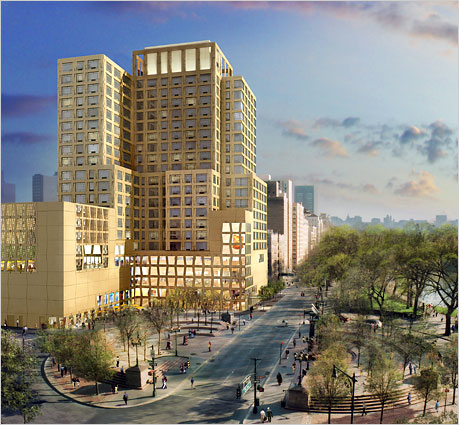 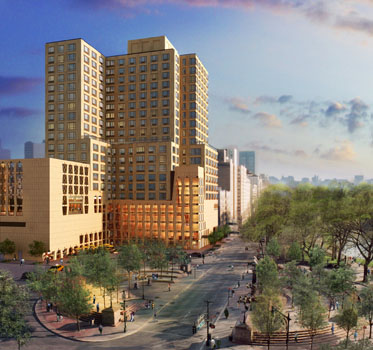 |
|
| Left- original design with lantern at top. | |
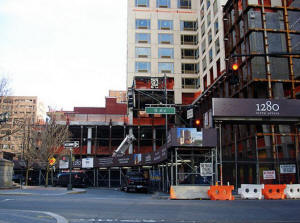 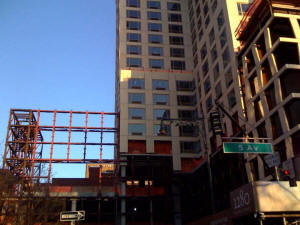 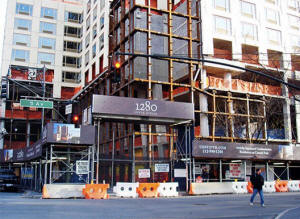 |
|
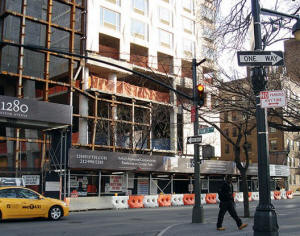 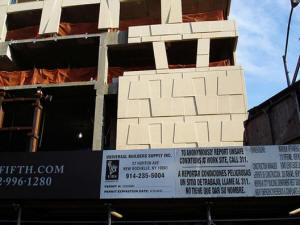 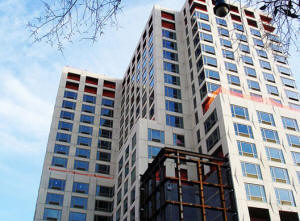 |
|
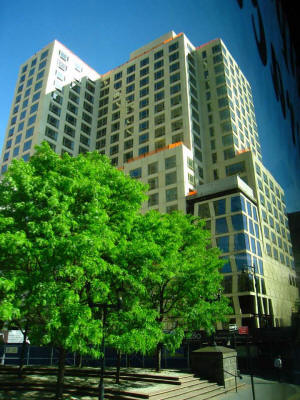  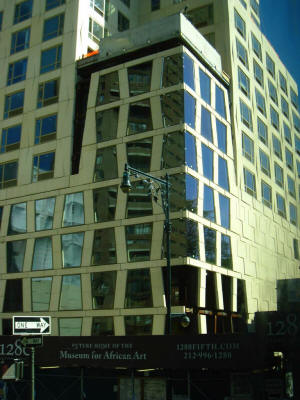 |
|
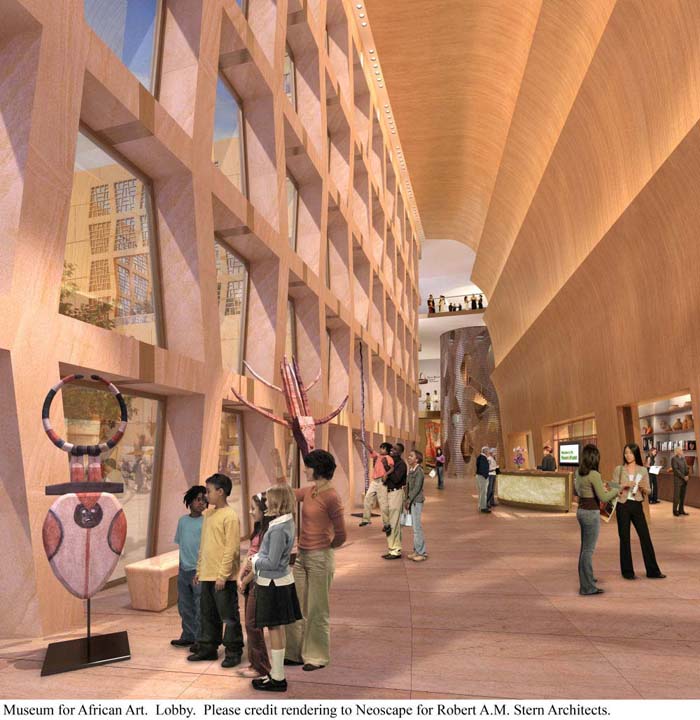 |
|
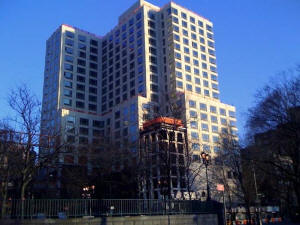 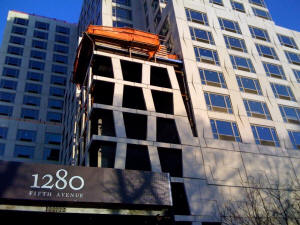 |
|
|
notes |
Pulling Museum Mile Uptown NY TIMES By KATE TAYLOR June 15, 2010 She was sometimes by his side when William C. Thompson Jr. worked the rubber-chicken circuit last year, a poised, attractive woman in no rush to pose for the cameras, confident that her husband, the New York City comptroller, could make his own case for why he deserved to be mayor. Elsie McCabe Thompson was perhaps an underused asset in her husband’s narrowly unsuccessful campaign against Mayor Michael R. Bloomberg. Smart, articulate and charming, she emerged infrequently from the shadows to talk to reporters. When she did, she often also spoke of something else dear to her heart: the Museum for African Art. Now after more than a decade pursuing what some saw as an impossible quest Mrs. Thompson is preparing to open the museum’s new $95 million home on upper Fifth Avenue next spring. “Maybe I’m just contrary,” she said during an interview this month, “but the more people tell me it can’t be done, the more I want to prove that it can.” Even as her husband steps back (temporarily, he says) from public life, Mrs. Thompson has emerged as the increasingly visible president of the 26-year-old museum as it completes an unlikely journey from a temporary office in Queens to Manhattan’s cultural center stage. On Fifth Avenue between 109th and 110th Streets, the museum will occupy the lower floors of a 19-story condominium designed by Robert A. M. Stern and will extend New York’s Museum Mile uptown into Harlem. The limestone-colored building, with window mullions that lyrically evoke the weave of African baskets, will become a high-profile showplace for one of the only two major American museums devoted solely to African art. (The other is the Smithsonian’s National Museum of African Art in Washington.) The hoopla associated with its arrival will be a coming-out party of sorts for Mrs. Thompson, who, if her husband has his way, would one day become the city’s first lady. Mrs. Thompson, 51, had singular qualifications to shepherd the museum project when officials tapped her to lead the institution in 1997. Though not an art historian, she was a Harvard-trained lawyer (and Eliot Spitzer’s moot court partner in law school) who had once held a high post in city government, clearly understood its mechanics and had established her own viable ties to the Harlem political leadership. And as the project moved forward, it did not hurt that she was the close friend and later spouse of Mr. Thompson, who held one of the city’s most powerful offices and remains today one of the front-runners for the 2013 Democratic mayoral nomination. So far of the $71 million raised in construction funds for the museum, some $32 million has come from public funds, though Mr. Thompson said he has had only the most limited of roles in securing them. The road ahead for the museum looks unremittingly steep however. It does not have an endowment. It is projecting an operating budget of as much as $8 million a year, or almost triple its current expenses, and it is doing so at a time when the aftermath of the recession has made both public and private donors cautious about taking on any new financial commitments. “Long before the recession these new buildings were struggling to pay operating costs,” said Gail Lord, the co-president of Lord Cultural Resources, an advisory firm with cultural clients around the world. “The recession only made it worse.” Small, specialized museums have the hardest time because they cannot realize economies of scale, Ms. Lord said, though she was impressed that the Museum for African Art had done enough planning actually to know what its budget would be. Museum board members say they will be able to tap additional resources, perhaps by selling the naming rights to the building, as long as the person is a good fit for the museum. (They estimate that they could get as much as $50 million for this.) And it is not as if Mrs. Thompson and her board have not overcome numerous other hurdles. The museum’s original development partner pulled out. Then there was a lengthy and at times contentious public approval process, the Uniform Land Use Review Procedure, known as Ulurp. Before construction the engineers had to adjust the foundation plan to account for unstable sediment. Mrs. Thompson said the remaining obstacles were “nothing more onerous than what we’ve already had to deal with.” Mrs. Thompson is the mother of twins, and with her wide smile and a slightly husky voice, she exudes a kind of matriarchal warmth, even toward the museum. She hugs. She describes the museum as “my baby,” and she will interrupt a conversation to dab at a stain on a female colleague’s shirt. “I wanted my kids, my little African-American kids, to be proud of being African-American,” she said recently to explain her passion for the museum. A native New Yorker, she worked for the law firm Shearman & Sterling before joining the administration of Mayor David N. Dinkins. Afterward, when she was turned down for jobs because she did not have experience running a big nonprofit, she founded one, devoted to bringing computer technology and training to poor urban neighborhoods. She makes no apologies for knowing little about African art when she took the museum job. “I sought to learn a lot, and I did,” she said. After opening in 1984 in an Upper East Side town house, the museum developed a reputation for innovative exhibitions, but its fund-raising was low. For many years it was located in SoHo, but the space was rented, making it hard to plan. When Mrs. Thompson saw the Fifth Avenue site, she said, she fell in love. The location, at the juncture of Harlem and Museum Mile, was symbolic, and it was close to audiences the museum wanted to reach. The first development plan called for a partnership with Edison Schools, the for-profit manager of public schools. Edison would help pay for the purchase of the land, some of which was city owned, and would build offices and a flagship school, whose students could use the museum. But Edison backed out in 2002, after it ran into financial difficulties. This current project is being undertaken with new development partners, Brickman and Sidney Fetner Associates, who are building luxury condominiums. The developers paid most of the cost of the land and built the core and shell of the museum. At a news conference for the project in 2007 Mayor Bloomberg praised the museum as an important addition to Museum Mile. The ceremonial groundbreaking that year was attended by a raft of public officials, including Gov. Eliot Spitzer, Lt. Gov. David A. Paterson, Representative Charles B. Rangel and Manhattan Borough President Scott Stringer. By this time Mrs. Thompson had been dating the comptroller, a longtime friend, for more than a year. Her husband, Eugene L. McCabe, the president of North General Hospital in Harlem, had died in 1998, and Mr. Thompson had filed for divorce in 2005. Mr. Thompson said in an interview that his future wife had called him over the years, as she did many people, seeking support for the museum. But he said he had not provided any assistance beyond a call to a deputy mayor when the museum was seeking to secure the land from the city and a 2005 conversation about funds with the City Council speaker, Gifford Miller. The conversation with Mr. Miller took place in April 2005, according to Mr. Miller’s appointment diaries, about a month after Mr. Thompson had recused himself from all museum matters because of the personal relationship. Mr. Miller, as reported this year in The Village Voice, ended up committing $750,000 in city capital funds to the project that year. But Mr. Thompson said it had been Mr. Miller who had contacted him about the museum, not the other way around. Mr. Miller said he could not recall the conversation or who had initiated it. Mr. Thompson said that it was his wife who had persuaded government officials to support the project. “They all know Elsie on her own, not because of me,” he said. The museum has set an ambitious slate of loan exhibitions for its first few months, including the first-ever career retrospective of the Ghanaian artist El Anatsui; a show comparing African baskets with those made in the American South; and an exhibition of ancient sculptures from Nigeria, organized by the museum and the Fundación Marcelino Botín in Spain. (The museum’s own permanent collection is small, with around 400 works.) Mrs. Thompson said she expects to draw more than the approximately 225,000 yearly visitors who go to the Museum of the City of New York, several blocks south on Fifth Avenue. She also expects substantial revenue from a restaurant; the sale of African jewelry, textiles and other items; and from leasing an event space. In part to bolster its donor contributions, the museum has expanded its board to 22 members (with a goal of 25); those added recently include the artist Martin Puryear and Mannie Jackson, the Harlem Globetrotters’ chairman. To save money the museum may open only certain sections next April. Adjusting expectations has been essential to keep the project on track, and Mrs. Thompson said that her own expectations have been challenged as she has confronted the works of art she now spends her days with. She had initially found a wooden spirit figure from Congo alien and frightening with its surface covered by nails. But she came to learn that each of the nails represented an oath or prayer — for example, a ritual prayer for the harvest or the resolution of a dispute between neighbors. “It represents the hopes and dreams, the fears, the prayers, the aspirations of a single community of people for generations,” she said of the sculpture. “For me that’s what resonated.” She hopes that the museum will bring Africa, long misunderstood as a “dark, distant place,” out of the shadows, she said. Its debut will certainly usher Mrs. Thompson further into the spotlight, a place she may one day inhabit even more prominently depending upon the political future. Copyright 2010 The New York Times Company |
|
|
|
|
|
|
|
|
|